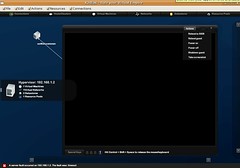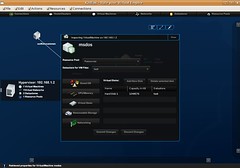Three weeks ago i wrote an article on Bluebear’s Kodiak. I guess the main conclusion was “great potential, not enough working features at the moment”.
Well, Bluebear’s engineers have been busy lately and added some additional features as you probably read in my previous post. The key message in that post clearly is “Configuration of all standard VM resources is available, e.g. Memory Size, CPU allocation/shares, virtual disks, virtual NICs, and removable devices”. In other words, this is the beginning… If they keep adding features in this pace then they probably have an alternative to VirtualCenter within 6 to 12 months.
So most of you probably want to see some screenshots of what to expect from the new version, I created screenshots of the VM config screens and one of the console screen with a new menu:






I don’t have any invites left, sorry about that…
